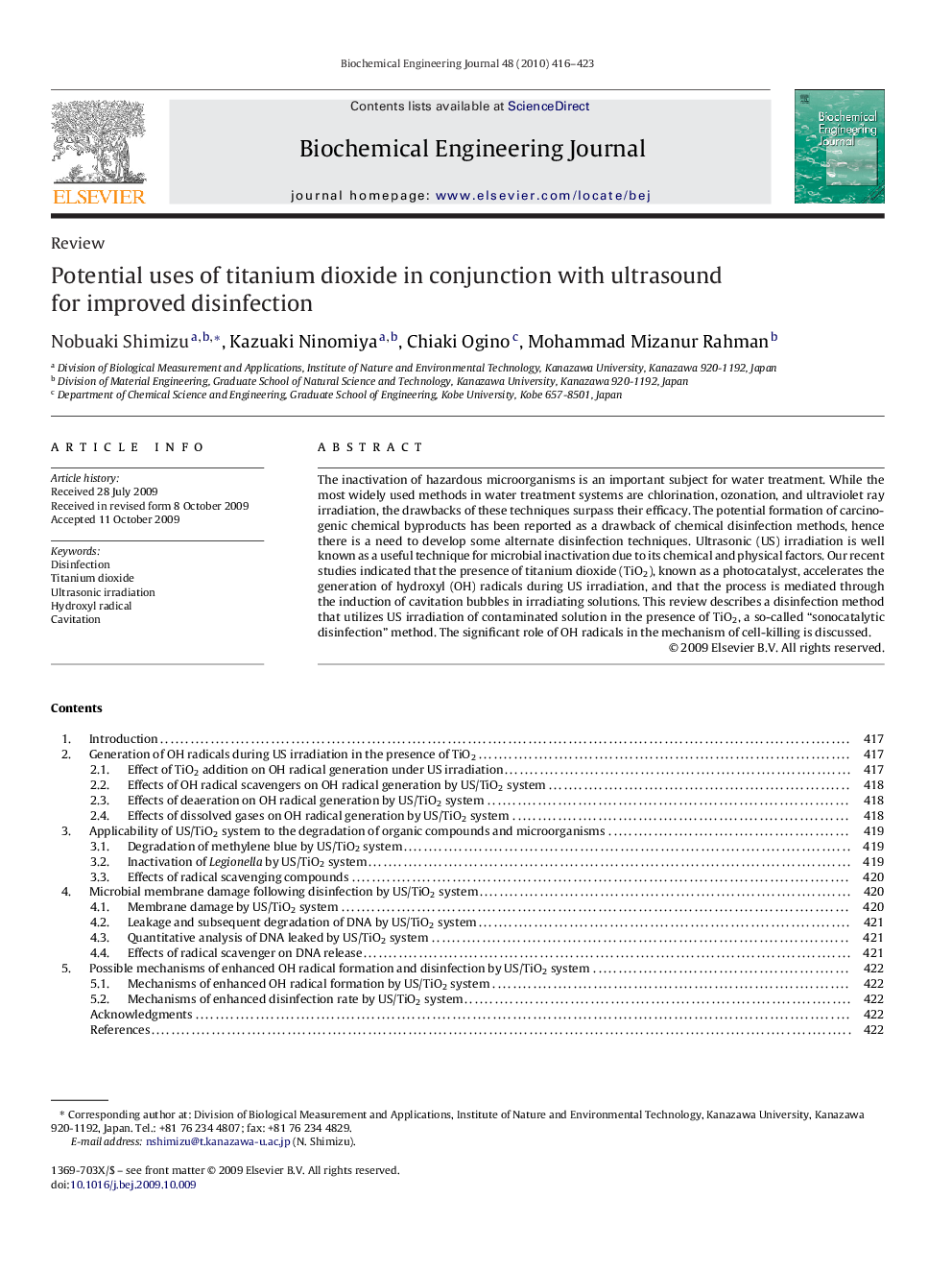| Article ID | Journal | Published Year | Pages | File Type |
|---|---|---|---|---|
| 4159 | Biochemical Engineering Journal | 2010 | 8 Pages |
The inactivation of hazardous microorganisms is an important subject for water treatment. While the most widely used methods in water treatment systems are chlorination, ozonation, and ultraviolet ray irradiation, the drawbacks of these techniques surpass their efficacy. The potential formation of carcinogenic chemical byproducts has been reported as a drawback of chemical disinfection methods, hence there is a need to develop some alternate disinfection techniques. Ultrasonic (US) irradiation is well known as a useful technique for microbial inactivation due to its chemical and physical factors. Our recent studies indicated that the presence of titanium dioxide (TiO2), known as a photocatalyst, accelerates the generation of hydroxyl (OH) radicals during US irradiation, and that the process is mediated through the induction of cavitation bubbles in irradiating solutions. This review describes a disinfection method that utilizes US irradiation of contaminated solution in the presence of TiO2, a so-called “sonocatalytic disinfection” method. The significant role of OH radicals in the mechanism of cell-killing is discussed.
